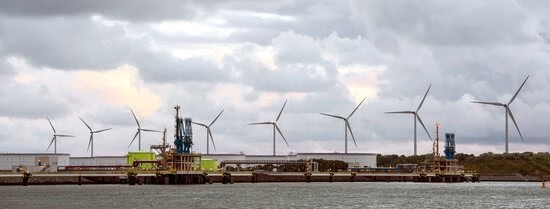Renewable energy sources like solar power and wind energy are increasing their market share. A great development, but for a successful energy transition the electricity markets need to become more flexible, concludes PhD candidate Cristian Stet of Erasmus School of Economics. Otherwise, the power grid risks becoming saturated and also the business case of renewable energy could get lost.
Early October electricity prices were peaking, especially when the supply of renewables sources was low. A huge contrast with the beginning of the Covid-19 pandemic when the demand, in some markets, dropped by more than 20 percent and favourable weather conditions (both sunny and windy) often resulted in negative prices. For Stet these fluctuations prove that some of our electricity markets are not flexible enough. “We want stable market prices and not that they skyrocket and plummet on a daily basis. The key to that is more flexibility”, he explains.
In his PhD thesis Stet describes how renewables bring increasing difficulties to swiftly adjust demand or supply to keep the grid in balance. That explains that even in periods with high (average) power prices, you can still find moments with negative prices, mostly when wind and solar power is abundant. If more renewables lead to lower average power prices, the researcher believes this brings a new problem: “You could think, what’s wrong with low prices, but who will invest in sustainable energy if the risk exists that the business case gets lost?”
“Inflexibility is often still a handicap we need to overcome”
But why is flexibility so important? “It provides the needed grid stability, making it weatherproof and ensuring that the lights always stay on”, says the researcher. Also, we are still using gas for our electricity when solar and wind is falling short, but the energy transition has no place for fossil fuels. Even if on the short-term gas can be a solution, on the long-term we have to get rid of it. “The more renewables we add the more we rely on weather conditions and the more flexible the market should become. Otherwise, we risk reaching a limit which slows down the energy transition. This inflexibility is often still a handicap we need to overcome.”
In his PhD thesis Stet mentions two ways of making the electricity markets more flexible. The first option is technological and involves storing electricity in case of peaks in production, for example through batteries or by converting electricity into hydrogen (which could be used as a fuel or can be converted back into electricity). The second approach has to do with changing our ‘demand response’. In this case the aim is to let the electricity demand follow the supply. Stet: “You could think of an office building that has energy demanding cooling systems and can save on costs by operating the system at moments when the demand and price are lower.”
Providing flexibility becomes a business model
For the researcher the good news is that the evolving electricity markets bring a lot of opportunities for what he calls ‘flexibility providers’, as offering flexibility becomes a business model. The more volatile electricity prices are, the better the outlook for flexibility providers is. A simple example is allowing electricity contracts that follow the market price real time, which is often not the case. The scientist does not imply that we should all run our washing machines when the prices are low, but for energy demanding businesses this could be interesting. Otherwise, the office building from the example would have no incentive to run their cooling system in the case of high renewable energy supply.
But the electricity markets are highly complex, also on the short term. Each day market participants agree on a price (forward price) for each hour of the next day based on several models that include weather conditions. “It is important to understand how weather dependent renewables reshape electricity markets and their flexibility needs. This way we can create business models for flexibility providers. With my research I want to contribute to that knowledge base.”
Markets keep evolving
To be able to do that it’s also important to keep track of the constantly evolving electricity markets. Thirty years ago, there were practically no liberalised electricity markets as the state was often the sole provider, sees Stet. Even fifteen years ago the market share of renewables was neglectable and electric cars were almost non-existent. “What happens if we add more renewables to the equation? The public mind is convinced of the frame that they are a sufficient solution, but they are only part of the solution. The key is that we need to learn to adapt and at the same time invest in flexibility.”
- PhD student
- More information
On 29 October 2021, Cristian Stet will defend his thesis, titled: '(In)flexibility in Power Markets with Supply from Variable Renewable Sources’ at Erasmus School of Economics.
Press Office Erasmus University Rotterdam, Lydia Datema: 06 4026 4367, press@eur.nl
- Related content

